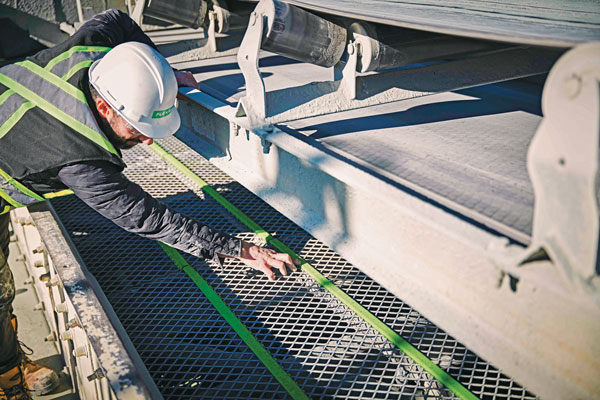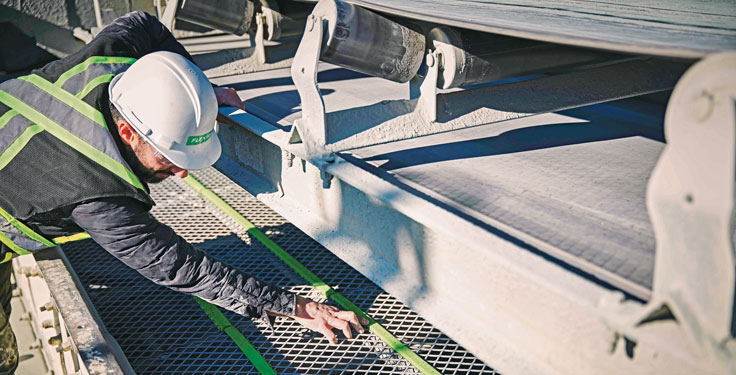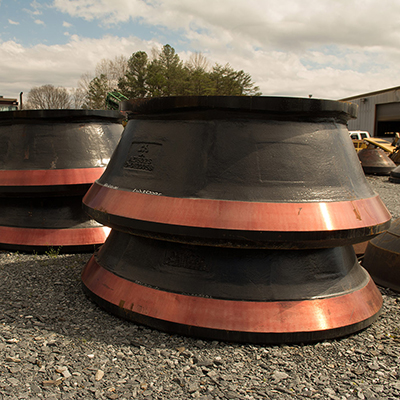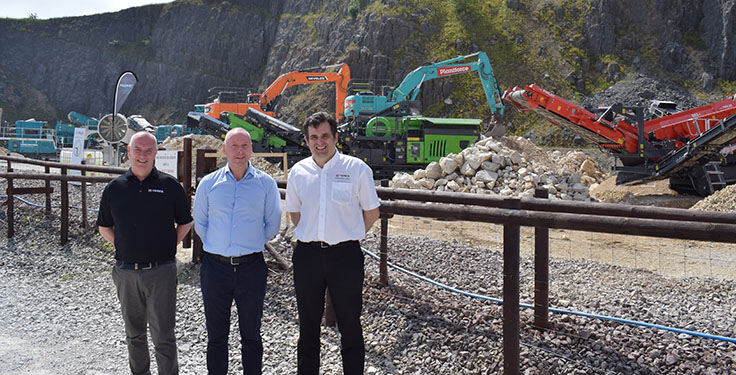
With the increase in infrastructure spending over the last few years, aggregate producers have plenty of work to do.
To keep up with increased demand, mines and quarries must reach and maintain high levels of productivity. This is easier said than done, though.
Unexpected downtime, increasing operating costs and Murphy’s law no doubt have their agendas. But producers can take concrete steps to prevent breakdowns, improve efficiency and maximize the uptime of their screens. Paying special attention to screen media selection, screen installation and vibration analysis can all help operations take advantage of increased opportunities.
Screen media selection
Many producers underestimate the impact their screen media choice has on productivity and uptime. Three main screen media types are, however, most helpful to consider, as each has pros and cons depending on a mine or quarry’s situation.
Synthetic media, such as rubber or polyurethane, stands out for its long wear life, but it can suffer from performance issues. Synthetic media features less open area than wire screens, limiting throughput and often causing more issues with blinding and pegging.
This tradeoff might lead some producers concerned with maximizing productivity to search elsewhere for screen media solutions.
Some of the most durable options for primary decks are perforated steel plates and heavy-duty rubber. Steel plates are desirable for applications that require durable media and high open area.
Still, the heavier media can make maintenance and operation challenging. Rubber media can also provide large openings, but it may be limited in open area and can suffer from blinding and pegging issues that hamper screening efficiency.
Despite their drawbacks, steel plate and rubber media might be the best option for applications with heavy, abrasive material.
Wire screens are a third option. Although woven wire has been a traditional go-to for its high open area and inexpensive cost, it has a short wear life relative to the options already discussed.
High-vibration wire screens, on the other hand, are more efficient and provide a compromise between the wear life of synthetic and woven wire media. The wires vibrate independently, amplifying the screening process and increasing throughput by as much as 40 percent. Plus, the blinding and pegging issues suffered by synthetic and even traditional woven wire media are reduced.
High-vibration wire screens are often an optimal choice for producers searching for ways to improve their production efficiency and output.
Proper installation
Proper screen media installation can ensure efficient and safe operation. Before starting an installation, the vibrating screen should be inspected. Maintenance technicians should examine the machine frame for cracks, loose bolts and broken welds and check for worn crown bars, weak or broken leaf springs and bent clamping rails. Any issues discovered should be addressed before installing the new screen media.
Technicians handling the screen media changeout should review the manufacturer’s instructions and ensure the panel is the proper size before starting the process. With each new set of screens, the crown bar rubber should be replaced. If not, it may not sit properly on the crown bar, which can cause the cloth to chatter and eventually break.
When working with tensioned screen media, the No. 1 priority is proper screen tensioning. Maintenance technicians should always tighten inner clamp rail bolts before moving to the outside bolts and changing machine sides to keep the panels centered. Tensioned screens should resemble a drum and not flex when pressed. Following these guidelines will help prevent premature wear or breakdowns, keeping an operation running and productivity high.
Vibration analysis
A final strategy producers can employ to dial in their efficiency in the coming months is vibration analysis. Vibration analysis is a form of predictive analysis, allowing producers to identify and prevent issues with their equipment.
Some vibration analysis sensors are designed as tools for quick and easy screen media assessments. These sensors provide information that can bring possible problems to light before they cause expensive breakdowns.
Weak or damaged screens, loose bolts and cracked side plates are a few examples of issues that often fly under the radar until they cause a costly and time-consuming shutdown.
Another benefit to vibration analysis sensors is they can help to visualize things like g-force, stroke, rpm and orbit. An important measurement many systems do not capture, however, is lateral movement.
In addition to helping to prevent catastrophic breakdowns and identify maintenance issues, the data provided by sensors allows producers to fine-tune their vibrating screens for maximum performance. For the mine or quarry desiring to focus on maintaining high levels of efficiency, optimizing their vibrating screens with the help of vibration analysis will not only improve their productivity, but help prevent problems before they happen.
Final thoughts
It’s important to take stock when gearing up for highly demanding production requirements.
Mineral processing facilities should work with an original equipment manufacturer to schedule a screen media consultation to analyze the screen media setup to prevent breakdowns, improve efficiency and maximize uptime.
Related: Drilling Deeper Episode 16: Mine permitting, water management, screening and more
Lars Bräunling is director of product technology and development at Major.












